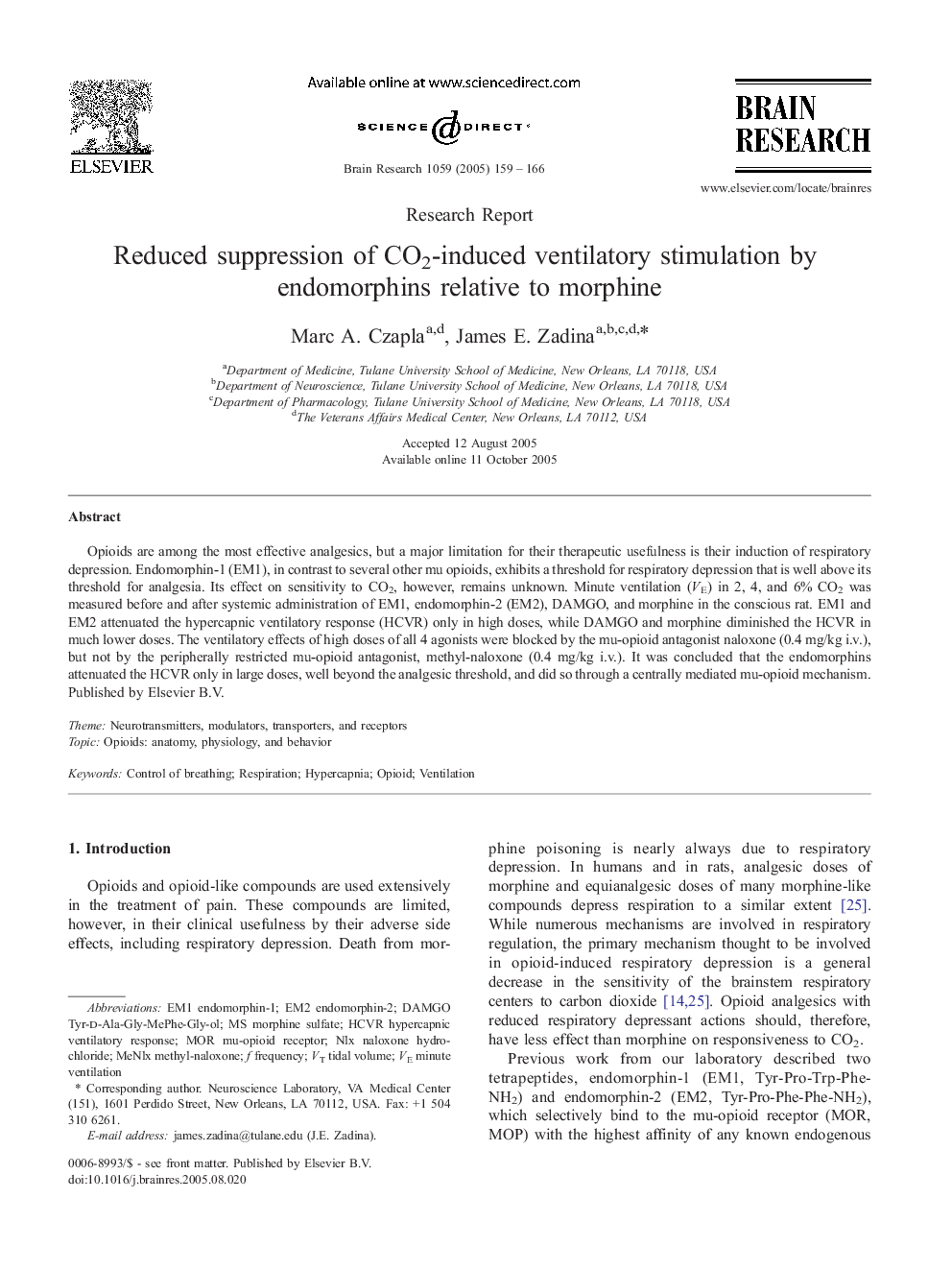| Article ID | Journal | Published Year | Pages | File Type |
|---|---|---|---|---|
| 9415872 | Brain Research | 2005 | 8 Pages |
Abstract
Opioids are among the most effective analgesics, but a major limitation for their therapeutic usefulness is their induction of respiratory depression. Endomorphin-1 (EM1), in contrast to several other mu opioids, exhibits a threshold for respiratory depression that is well above its threshold for analgesia. Its effect on sensitivity to CO2, however, remains unknown. Minute ventilation (VE) in 2, 4, and 6% CO2 was measured before and after systemic administration of EM1, endomorphin-2 (EM2), DAMGO, and morphine in the conscious rat. EM1 and EM2 attenuated the hypercapnic ventilatory response (HCVR) only in high doses, while DAMGO and morphine diminished the HCVR in much lower doses. The ventilatory effects of high doses of all 4 agonists were blocked by the mu-opioid antagonist naloxone (0.4 mg/kg i.v.), but not by the peripherally restricted mu-opioid antagonist, methyl-naloxone (0.4 mg/kg i.v.). It was concluded that the endomorphins attenuated the HCVR only in large doses, well beyond the analgesic threshold, and did so through a centrally mediated mu-opioid mechanism.
Keywords
MORNLXNaloxone hydrochlorideHCVREM2EM1DAMGOOpioidOpioids: anatomy, physiology, and behaviorendomorphin-2Neurotransmitters, Modulators, Transporters, and Receptorsendomorphin-1FrequencyRespirationVentilationminute ventilationTidal volumemorphine sulfateHypercapniaHypercapnic ventilatory responseControl of breathingmu-opioid receptor
Related Topics
Life Sciences
Neuroscience
Neuroscience (General)
Authors
Marc A. Czapla, James E. Zadina,
